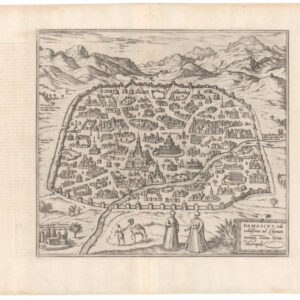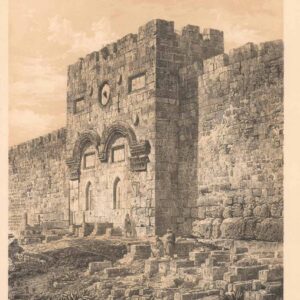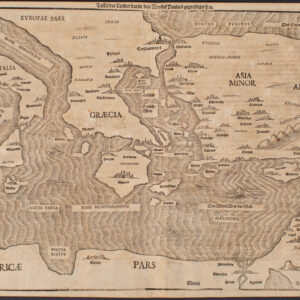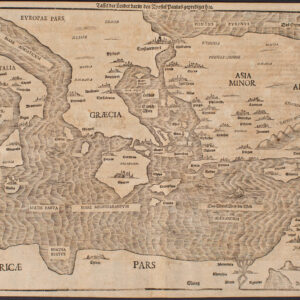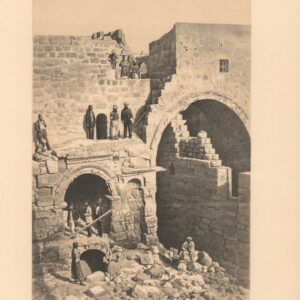Early 20th-century panoramic photo showing Bethlehem and its surroundings.
Bethlehem.
$575
In stock
Description
A compelling historical panorama of Bethlehem, taken in the early 20th century and published in a neat folding booklet by the Abbey of the Dormition in Jerusalem. The view encapsulates the essence of this ancient city, portraying its historic charm set against the backdrop of the Judean landscape.
We see Bethlehem nestled amidst rolling hills and valleys. The landscape surrounding the city is characteristic of the Judean Hills, marked by terraces and rugged terrain. Bethlehem appears as a mix of older historic structures and more modern buildings. The city houses various religious and historically significant structures. Among these is the Church of the Nativity, one of the most famous landmarks in Bethlehem, traditionally regarded as the birthplace of Jesus Christ.
The image was likely taken after World War I. In the 1910s, Bethlehem was part of the Ottoman Empire until the end of the conflict. Significant political and social upheavals marked this decade. Following the war, in 1917, British forces under General Edmund Allenby captured Jerusalem and Bethlehem, marking the beginning of the British military administration in Palestine. The subsequent establishment of the British Mandate in Palestine in 1920 brought about significant political and administrative changes. With its religious significance as the birthplace of Jesus Christ, Bethlehem continued to be a pilgrimage destination. Under British rule, there was an effort to modernize infrastructure and governance. However, the period also saw the beginnings of nationalist sentiments and tensions between different communities in the broader region of Palestine.
Cartographer(s):
The Abbey of the Dormition is a Benedictine abbey in Jerusalem, located on Mount Zion, just outside the walls of the Old City. The name “Dormition” is derived from the Christian belief in the “dormition,” or “falling asleep,” of the Virgin Mary, which is an event commemorated in Eastern Christianity and refers to the end of Mary’s earthly life and her assumption into heaven.
Condition Description
Folds into a cardboard cover. Included is a page with the list of sites which appear on the panorama.
References
